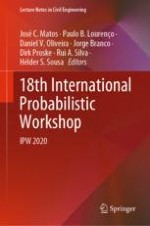This volume presents the proceedings of the 18th International Probabilistic Workshop (IPW), which was held in Guimarães, Portugal in May 2021. Probabilistic methods are currently of crucial importance for research and developments in the field of engineering, which face challenges presented by new materials and technologies and rapidly changing societal needs and values. Contemporary needs related to, for example, performance-based design, service-life design, life-cycle analysis, product optimization, assessment of existing structures and structural robustness give rise to new developments as well as accurate and practically applicable probabilistic and statistical engineering methods to support these developments. These proceedings are a valuable resource for anyone interested in contemporary developments in the field of probabilistic engineering applications.
